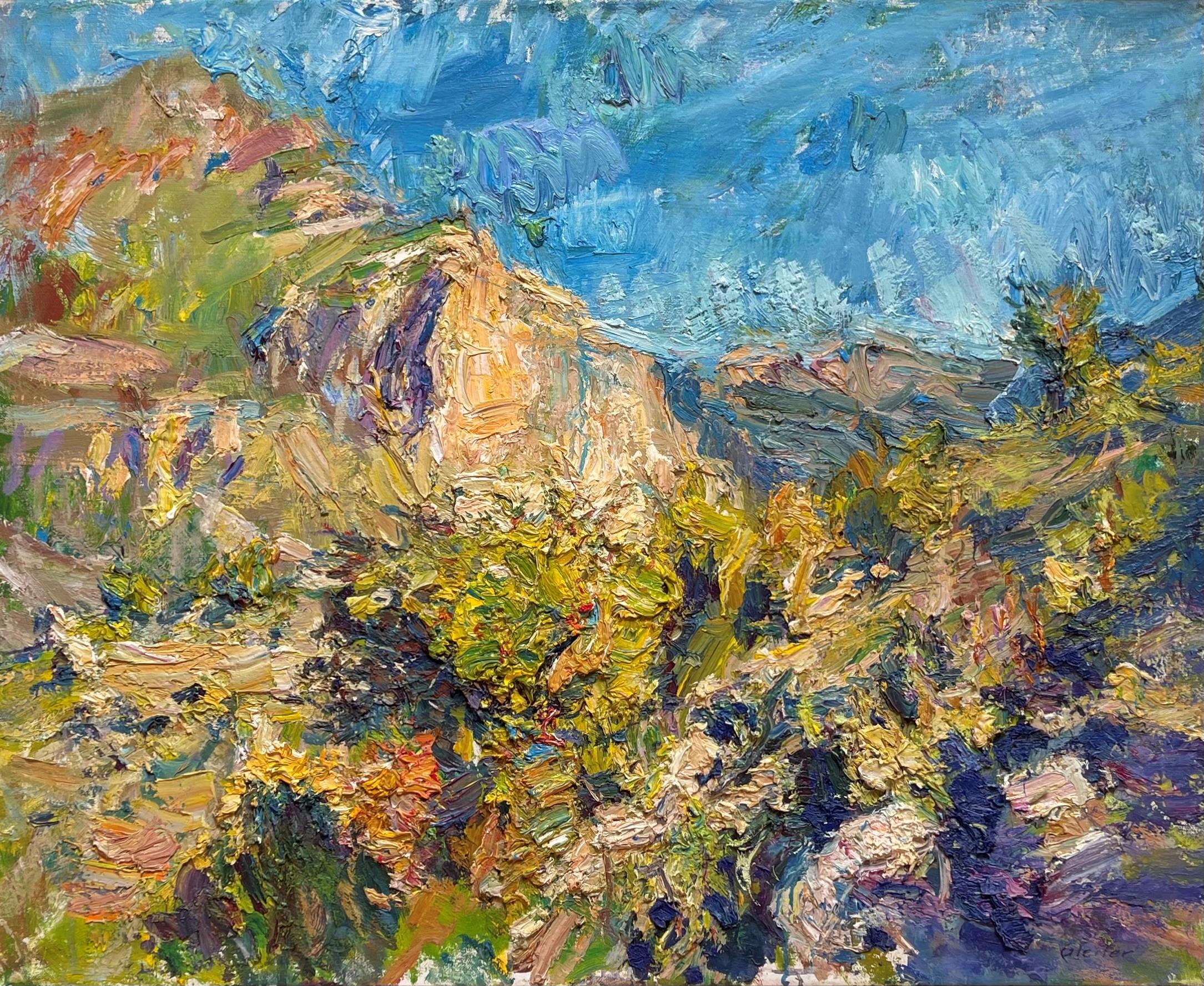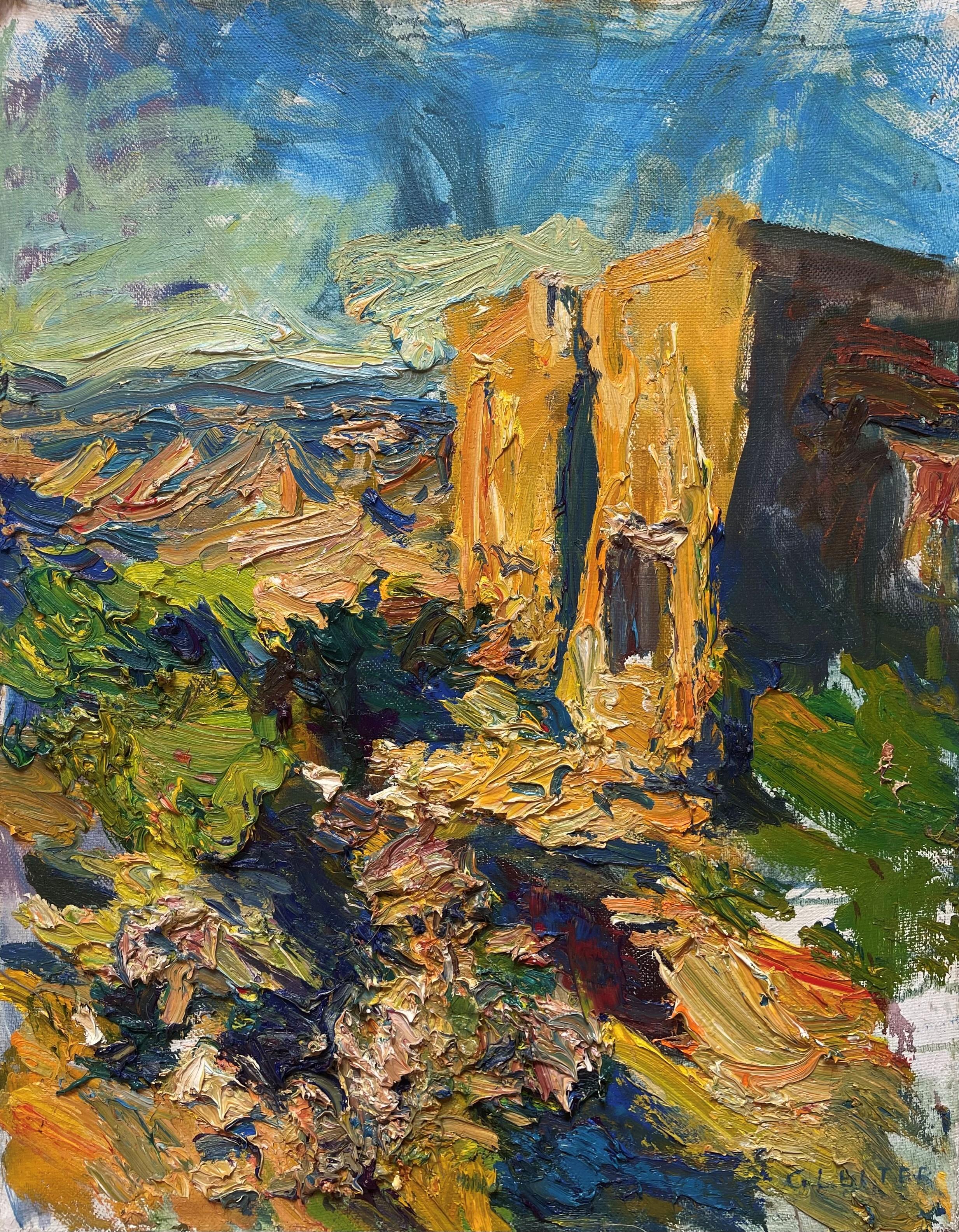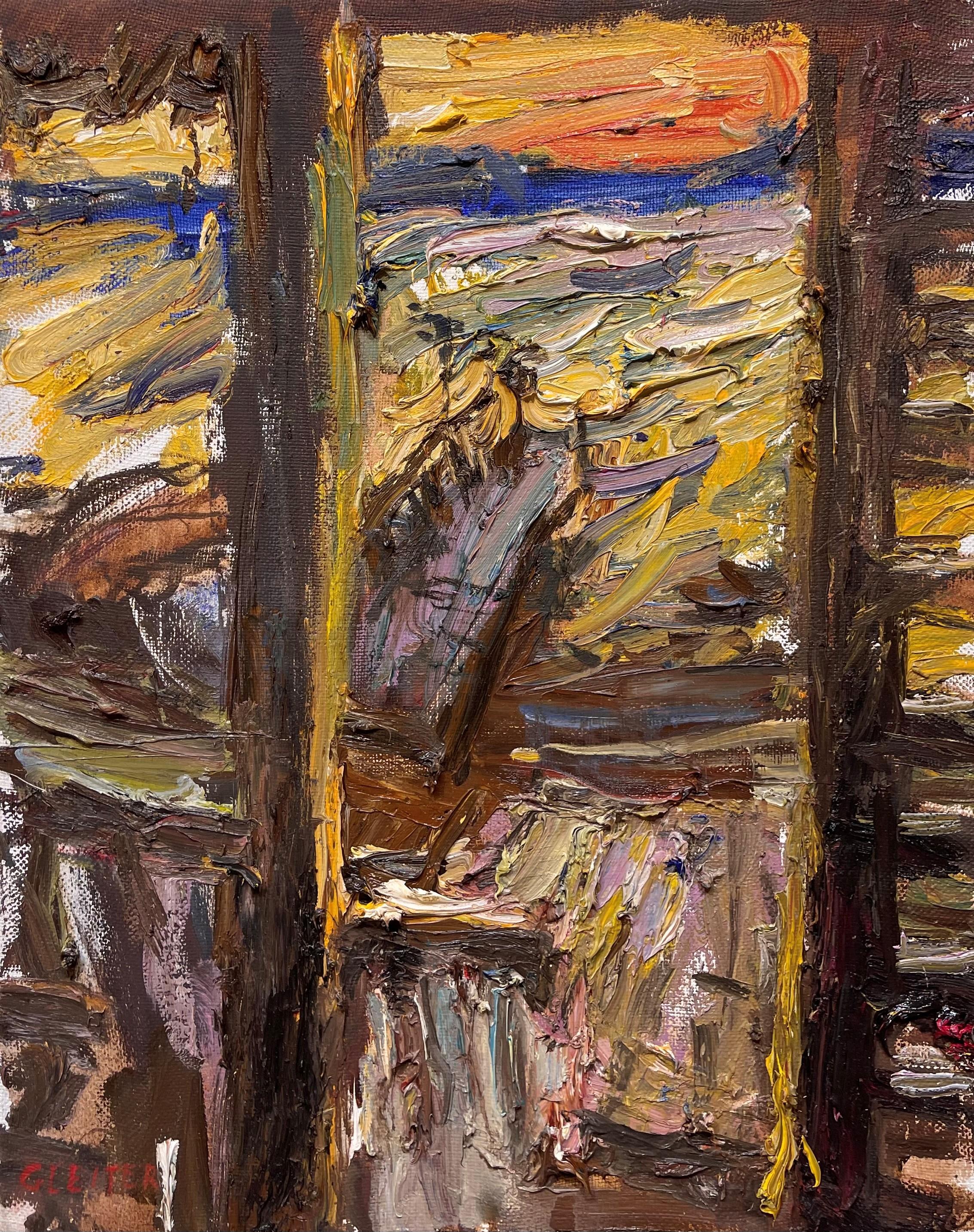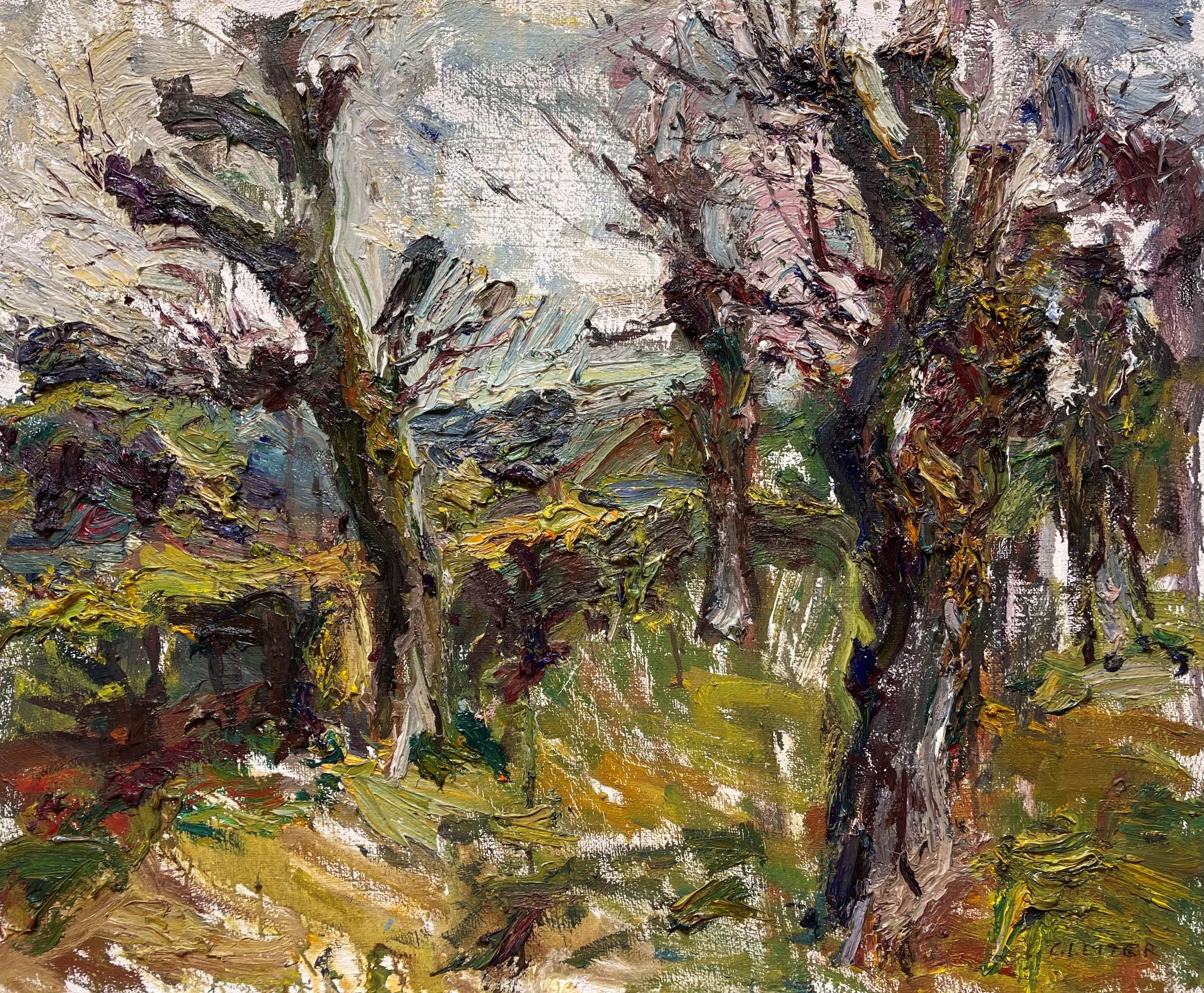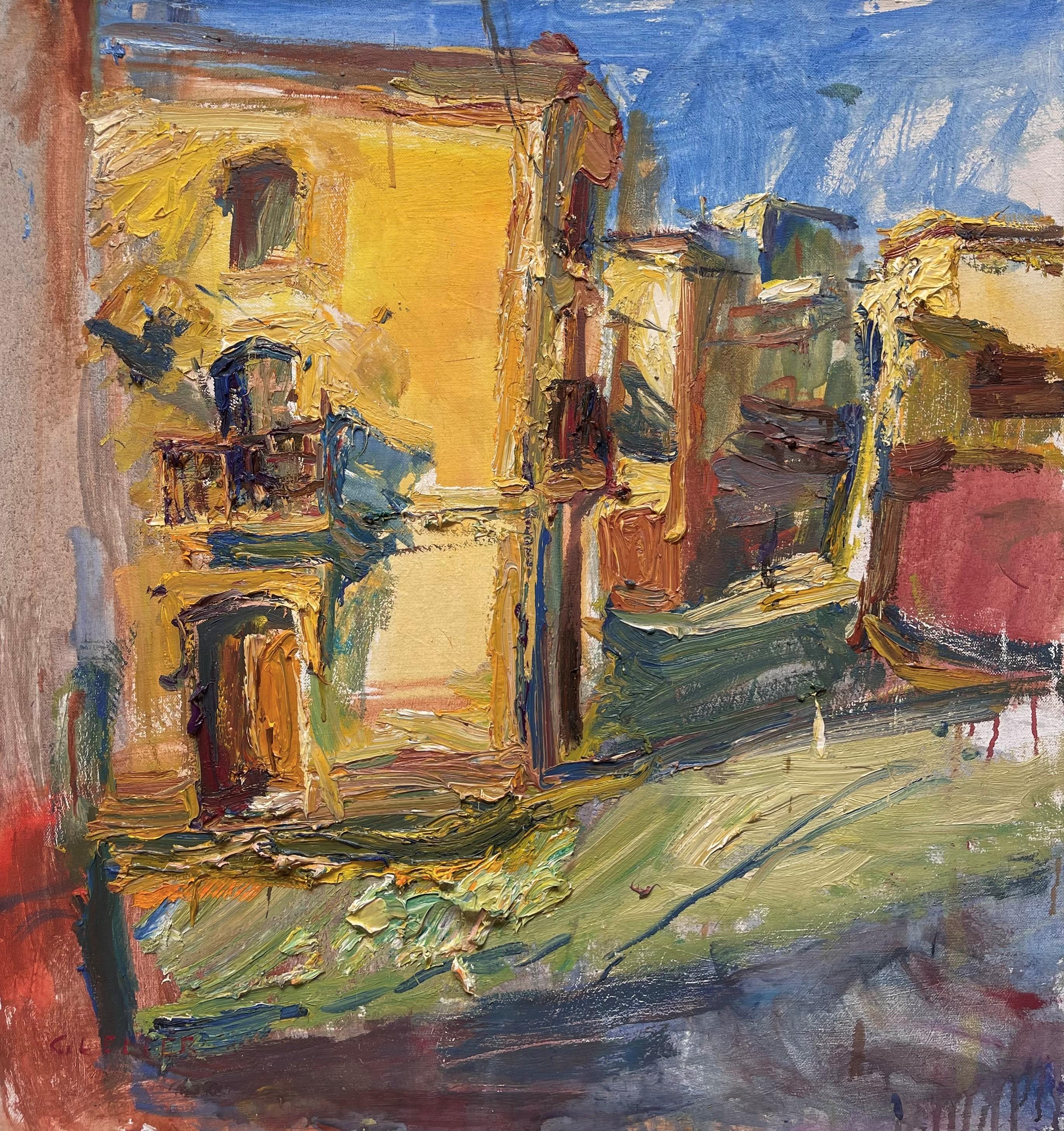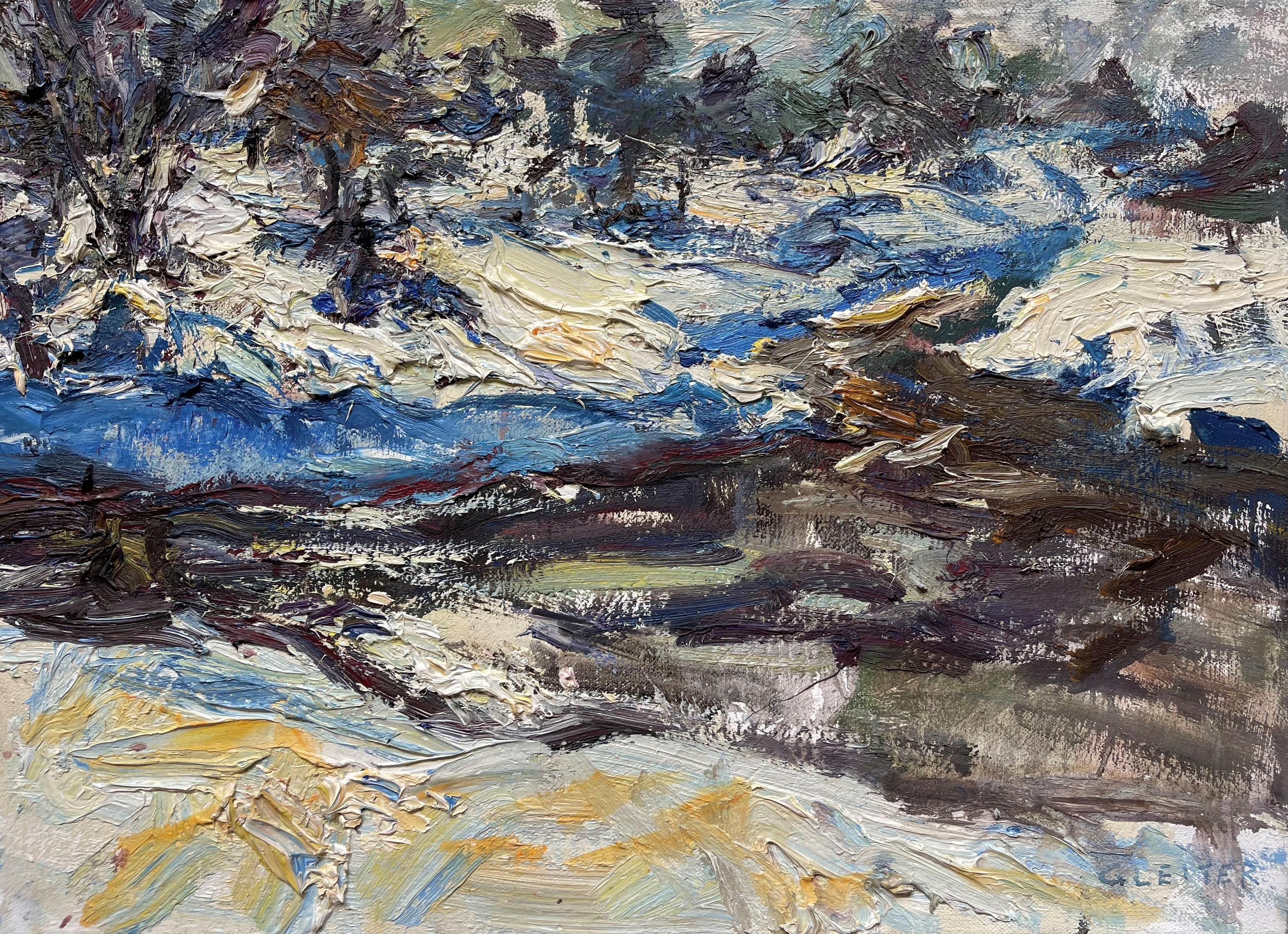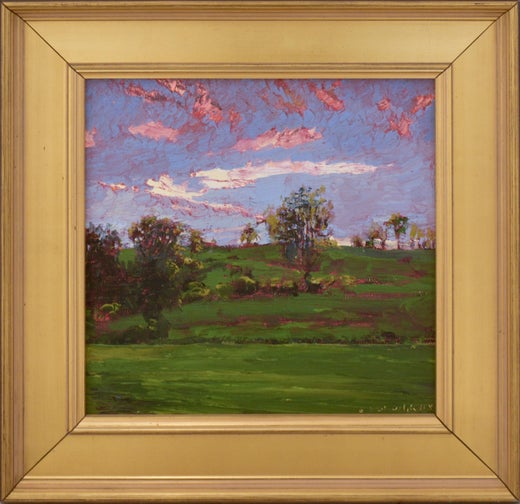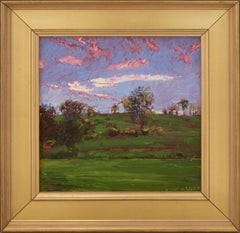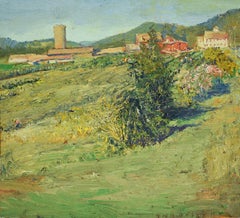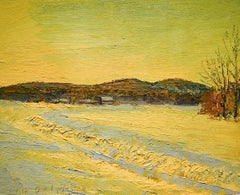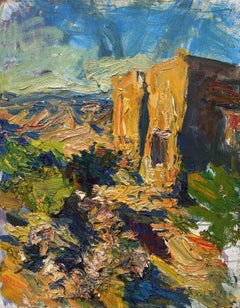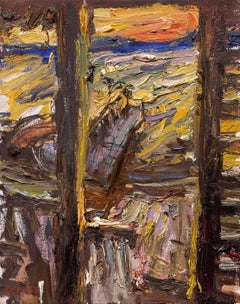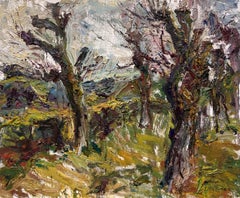Impressionist style en plein air landscape painting of rural country hay field at sunset with robin egg's blue sky and yellow clouds
#5790 At the Slurry Pit, painted by Harry Orlyk in 2020
oil on linen, ready to hang as is
14" X 16 3/4" inches unframed
Signed lower right corner
Excellent condition
Harry Orlyk is celebrated for his ability to capture rural country landscapes with impressionistic brushstrokes and bright color palettes. Painting daily, the artist drives throughout the upstate New York, stopping to observe and paint 'en plain air' whenever and wherever a landscape strikes him. Orlyk prefers to leave his canvases unframed to reveal the exposed linen mounted to a sturdy homasote board, which can be easily nailed into a wall. This painting is a perfect example of Orlyk's impressionistic aesthetic. Here, the artist captures a peaceful, everyday, country landscape in a range of warm, golden tones. The soft robin's egg blue sky contrasts against the vibrant yellow clouds, illuminated by the setting sun. The scene is made with gestural strokes of paint that culminate onto a textured, impasto surface. The artist's signature is located in the lower right corner.
The artist prefers to leave his paintings unframed. The painting can be installed with one nail, hammered behind the linen and through the homasote board.
About the artist:
Harry Orlyk was born in Troy, New York in 1947. In 1971 after graduating college, he went on to graduate school at the University of Nebraska at Lincoln . Over the next nine years, he was influenced by several Nebraskan artists. "Still-life painter Robin Smith taught me how to use paint without turpentine - to paint from the tube." He also admits the influence of photographer Lawrence McFarland who taught him what spiritual space was, and how to emphasize it. Lastly he credits well-known Lincoln painter Keith Jacobshagen with having impressed on him the importance of routine. He currently resides with his family in Salem, New York, near the Vermont border.
About the work:
For anyone raised in the country, Harry Orlyk’s impressionist oil paintings spark a sense memory that is at once shared and deeply personal. His work evokes a return to days spent as a kid when you played behind “Old Hap’s Barn”, or played hide-and-seek in the cornfield. If raised in the city, Orlyk’s paintings illustrate what you fantasized living in the country would be like. With each changing day and season, Orlyk reminds us of the simplistic beauty inherent in rural, small town America.
Statement from the artist:
"The Frame, what exactly is the frame? Is it a decorative note of separation between art and life, a box to hold an image? Whatever it is, it is a useful studio tool to making artistic work more approachable. Yet, with no disrespect for the power of a frame to make a person buy a painting, or even like a painting, I often choose to exhibit without it.
Twenty seven years ago I set out to paint ten thousand, on-site landscape paintings. To achieve this I adopted a daily habit of morning preparations and afternoon painting sorties into surrounding land. After a dozen years of this, I realized how my painting expressed more of the relationship a human has with the land and less about what products the land can produce.
My painting, sketching and drawing go on month after month, season after season, without stopping to duck the storms and bitter weather. In this, a spiral has begun to pull me through time as it pulled the centuries of farmers and hunters who have come this way. I am the hunter, always seeking the right place, the farmer, aware of the weather, of plant and animal life. It is the process, the relationship to a cyclic world that interests me more than the products, more than nicely framed paintings. Beyond this, I hope my paintings can be seen as portraits of days. Each day is a model who will not return tomorrow. To paint even the same place on a second day is to a paint a sitter who wasn¹t the one who was there yesterday. The Northeast and Great Plains, where I have spent most of my life is much visually effected by weather and climate. Skies are as different from day to day as people's faces. As they pass I try to know them personally.
In years of living with fairly large bodies of recent work there has evolved a way of grouping it in my studio. Paintings, often fifty to sixty, unframed, but stretched to the surface of homosote boards line most of the studio’s wall space. These are often in rows of five paintings, from tight sequences of days, stacked one row above another. The main wall of the studio usually contains fifteen images. I often refer to this as a ‘wall’ of paintings. Often the relationship between work is cinema graphic, instantly telling a story of landscape painting progressing through endless variation.
Frequently, clusters of work surround a painting of special meaning: anniversaries or deaths of people known personally or otherwise. Now a wall of paintings hanging at the Nebraska Weslyan University Elder Gallery is titled "Days Surrounding September 11, 2001". Another group of fifteen images in this same show is titled "Requiem for the Disenchanted Farmer". Paintings of days made in the recent summer surrounding a farmer’s death, are of the farmers land and the land surrounding it.
Most recently, I have assembled a wall of paintings surrounding the start of a war where the farmer and his animals and their subsistence are destroyed before the fighters are found. I might call this wall "must safely graze". The advantages to staging work this way are numerous to both the painter and the audience and the framer ultimately gets to frame the work. The painter can focus resources on feeding the material needs of the painting. With long practice, an artist can learn to begin a painting nearly everyday and a visual journal unfolds unlike that of conventionally framed victories in landscape painting that blow our socks off one at a time. The journal points to change, continuity, flow, process. It is in this, perhaps, that I am a more conceptual artist rather than a landscape painter."
